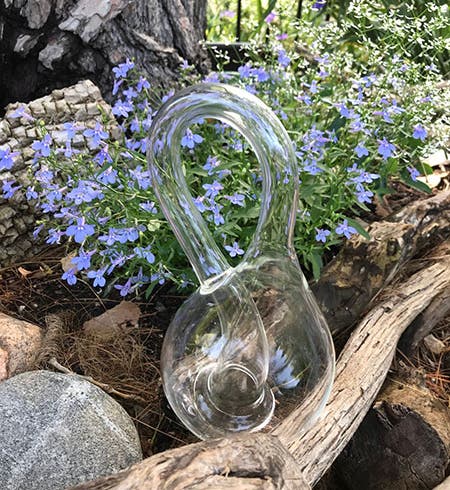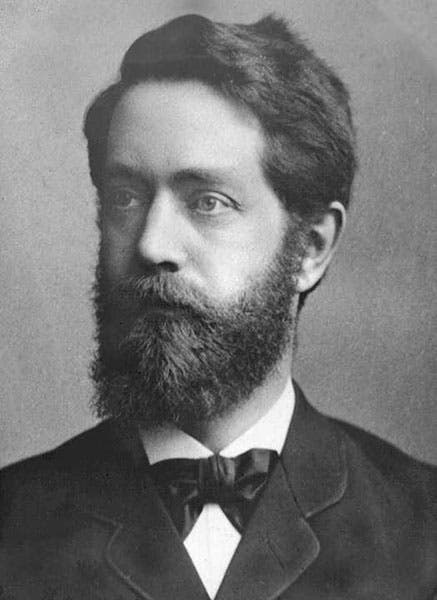Scientist of the Day - Felix Klein
Christian Felix Klein, a German mathematician, died June 22, 1925, at the age of 76. Klein was one of the stellar mathematicians of late 19th-century Germany, made many contributions to geometry, re-established Göttingen as THE place to study mathematics, and gave a job to David Hilbert, but today we limit our discussion to the only Klein achievement that we non-mathematicians can (sort of) understand, or at least appreciate: his 1882 description of a most interesting topological surface, now called a Klein bottle.
A Klein bottle is the surface you get if you start out with a square, join two opposite sides to form a cylinder, and then join the other two sides, but first giving one of them a half twist. Unfortunately, this last step (the half twist) requires a detour through a fourth spatial dimension, which means that in our three-dimensional space, we can only approximate the final surface of a Klein bottle, usually as something like this. In four dimensions, the surface does not intersect itself. The Klein bottle is intriguing because it has only one surface, and therefore has no inside or outside, and no boundary. It is the four-dimensional analog of another topological oddity, the Möbius strip, which is made by taking a bounded two-dimensional surface and twisting it through the third dimension before joining the ends, thereby producing a surface with one side and one edge. We did a post on Möbius once, but be advised, this blog was only three weeks old at the time, and the graphics (and perhaps the text) are a bit weak. But there is a reference to Maurits Escher, who drew ants on a Möbius strip and was himself a Scientist of the Day just last week.
One might well wonder, why is Klein’s surface called a “bottle,” since a bottle with no inside seems to lack the one essential feature required by a bottle? It has been conjectured that Klein's creation was originally called a Kleinsche Fläche, a Klein surface, and this term morphed (my verb, but I think a good one for a discussion on topology) into Kleinsche Flasche (Klein bottle). It sounds plausible to us.
A Klein bottle and a Möbius strip are related, in that if you cut a Klein bottle in half along its axis of symmetry, you will get two Möbius strips with opposite curvature. This means that another way to construct a Klein bottle is to glue two mirror-image Möbius strips together. Again, this requires a maneuver through the fourth dimension to create a proper bottle. I once wrote an April Fool anniversary on Möbius and his invention of the strip steak, and I played with chronology a little and had Klein design his casket. It was, of course, in the shape of a Klein bottle, and no one could quite decide if Möbius was in it or not, or somewhere in the fourth dimension.
There is a gentleman in Oakland who has three-dimensional Klein bottles for sale; he was the source for the lovely bottle of mine that you see in the first image. I try never to recommend anything for purchase in this space, but since Clifford Stoll may be the only source for Klein bottles in the world, and since he clearly does this for fun, and not as a business, I have no qualms about directing you to his website. A Klein bottle on your sideboard might be a choice receptacle for some fine burgundy. Doesn’t wine decanted through the fourth dimension sound intoxicating?
Dr. William B. Ashworth, Jr., Consultant for the History of Science, Linda Hall Library and Associate Professor emeritus, Department of History, University of Missouri-Kansas City. Comments or corrections are welcome; please direct to ashworthw@umkc.edu.




![“Aurora Borealis,” hand-colored wood engraving by Josiah Wood Whymper, [Natural Phenomena], plate 2, 1846 (Linda Hall Library)](https://assets-us-01.kc-usercontent.com:443/9dd25524-761a-000d-d79f-86a5086d4774/0245ffcb-b70c-477c-8792-0a73ebd54eb2/Whymper%2011.jpg?w=210&h=210&auto=format&fit=crop)


